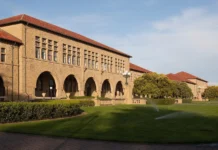Happiness is one of those words that has many nuanced sub-meanings. Joyous or joyful are sub-categories that refer to a more intense active expression of generalized positive feelings for a defined discrete period of time. Another subcategory is gay, a term which has been appropriated by the homosexual community, but which used to refer to a lighter positive state of mind of indefinite duration. Merry is an archaic word that refers to a kind of mellow laid-back happiness. Glad refers to happiness regarding a specific situation. Cheerful again refers to a non-directed state of mind like the original meaning of gay. Delighted is a more active expressive version of glad. And ecstatic and elated are heightened versions of happy that exist for relatively short durations. Ecstatic focuses on a state of mind which frequently exists independent of any external world situation that would be causing it, while with elated, one is usually elated about something in the external world. There is contented which refers to a quiet low-key form of happiness, again usually independent of any one life situation. It often refers to the ability to find happiness in spite of difficulties and obstacles in one’s life path. And finally, there is satisfied which deals with being contented that certain positive situations have concluded successfully. In particular, it deals a lot with individual and group accomplishments.
So, referring to these different varieties of happiness, are there are any major differences between the way that people have experienced happiness in traditional natural societies and the way that they have experienced happiness in modern technological societies? Which of these sub-categories of happiness are dominant in which of these two major categories of societies?
In traditional natural societies, there is a lot of direct interaction between people and their living environments. A lot of primary experience. And a lot of exhausting hard labor. In such a living environment, happiness has consisted principally of getting one’s work done successfully and then being able to rest. In other words, for most people in traditional natural living environments, the primary forms of happiness were contentment and, by extension, satisfaction. However, there were also many festivals interspersed between the days of work. Such festivals elicited a lot of joyous and joyful emotions in the participants.
Among the wealthy classes, who would not have needed to have a sense of relief from physical labor, they would have instead experienced happiness as a shallow more generalized cheerfulness with the addition of stand-out moments of delights. I am not trying to imply that wealthy people never experienced sadness and grief. I am just saying that when they did experience happiness, it tended to take the particular shape that I described. A background of shallow cheerfulness, shallow grounding, and the delightful and even elated emotions that come with a successful passionate expression.
Happiness in modern technological society has a totally different flavor to it. Happiness for the members of this society is anything to pull people out of the numbness they are experiencing as a result of the overly frictionless, overly mediated living environment in which they feel immersed. Such happiness must exist in stark contrast to the numbness they experience as a result of the experiential vacuum in which they are living. Members of this group focus on forms of happiness that give them a heightened positive sensation, primarily as an ecstatic experience. Drugs, alcohol, free love, risky outdoors experiences like mountain climbing and parachuting. Anything to give a person a good high.
Of course, people also like to be satisfied with their accomplishments, particularly because they are sometimes in relatively unique areas of experience. In creative areas, where people can produce relatively unique artistic and intellectual results. As an entrepreneur, building up one’s own company. Inventing a unique device. Winning sporting events and establishing new records in everything from community to international competitions. This kind of satisfaction is different from the kind of satisfaction that has occurred in less affluent traditional societies where people are more likely dealing with issues of survival. Only a select few, a relatively small leisure class, has the kind of economic safety net in traditional societies to be able to think of developing the kind of unique accomplishments that we are describing here. The satisfaction that comes with unique accomplishments is mixed with elation. It is the kind of happiness that makes a person want to shout “Yay for me!!!” But unique endeavors are definitely generated from an existential position of being in an experiential vacuum. The prime motivation for such an accomplishment is doing something that will gain recognition from many other people, and, in so doing, help to pull the person out of a vacuum. We can say that many great achievers today are people who experience a vacuum more strongly than most. Perhaps in a more traditional natural society, the great achiever is fighting a different problem: the undifferentiation that comes from the overwhelming amounts of organic stimulation that come from a society with a lot of primary experience. But I would say that the kind of happiness created in a traditional natural society would again be a mixture of satisfaction with elation. What unique achievers have in common from these two different kinds of living environments, these two different kinds of societies, is the need to separate themselves from the dangers of where they live and rising above them. Almost becoming a living environment, a society by themselves.
© 2022 Laurence Mesirow
























